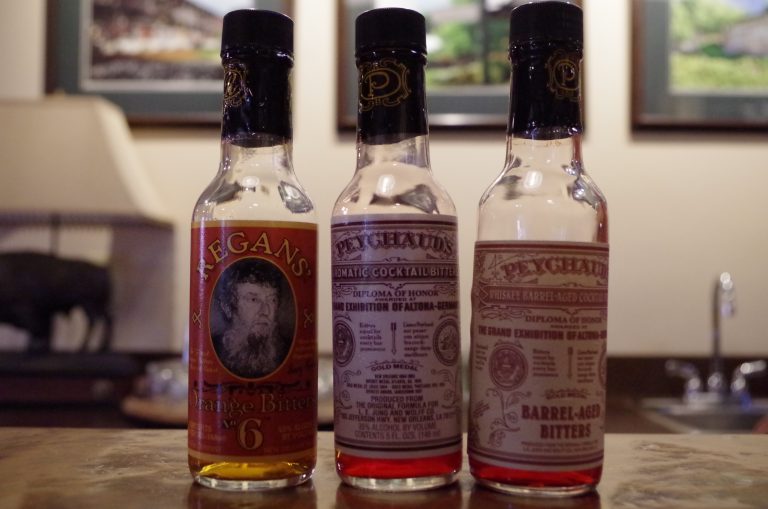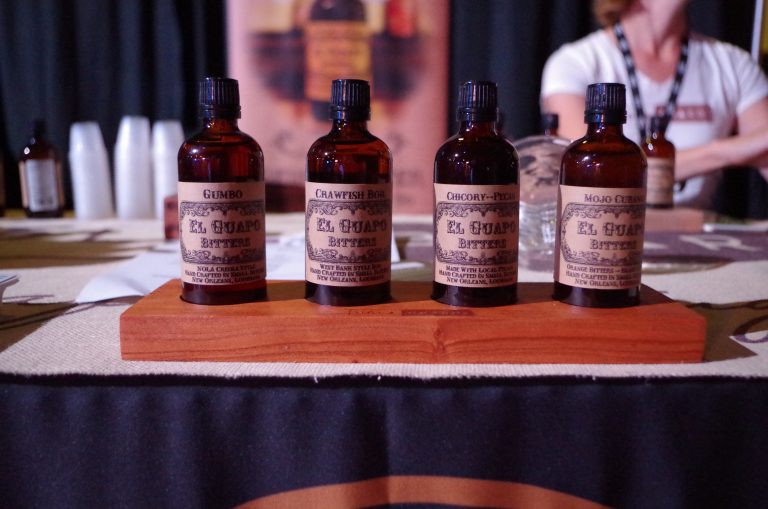Bitters: the Spice of Cocktail Life
All photos by Maggie Kimberl.
Where do bitters come from? I love a good Manhattan, and I even make them pretty well myself, but I’ve never stopped to think about the various ingredients that go into them. As I pay closer attention I learn that there are almost as many options out there for bitters as there are for whiskeys, so I decided to get to the bottom of where, exactly, bitters come from.
According to Albert Schmid’s The Manhattan Cocktail, “Bitters are to cocktails what herbs and spices are to food. Bitters are made from high-proof alcohol that has been infused with the flavors of roots, barks, fruit peels, seeds, botanicals, flowers, and herbs. Bitters give 'depth and complexity' to a drink as salt and pepper do to food.”
In other words, a Manhattan wouldn’t be a Manhattan without the bitters. I’ve always used Angostura bitters in mine, but I decided recently I needed to branch out and investigate other varieties. The only other bitters I know from back bars is Peychaud’s, and after a little investigation I discovered they were made right down the road at Buffalo Trace Distillery in Frankfort, Kentucky.
Visiting the Home of Peychaud’s and Regans' Bitters
In a relatively small building off the beaten path for tours is the entire operation for Peychaud’s and Regans’ bitters. They used to be made only a few weeks out of the year, but thanks to the cocktail boom they are now being produced at maximum capacity year round and shipped out frequently.
According to the Sazerac website, “In 1793, wealthy plantation owners were forced to flee the island of San Domingo, salvaging what possessions they could. Many came to (what was then) the Spanish Louisiana city of New Orleans. Among the possessions of one Creole was a recipe for a compounding of a liquid tonic called bitters. His name was Antoine Amedie Peychaud and he was an apothecary. These bitters, good for what ailed one irrespective of malady, gave an added zest to potions of Cognac brandy he served friends and others who came to his pharmacy. Today, Peychaud’s Bitters are produced according to the original recipe at Buffalo Trace Distillery. They are an important element in drinks such as the Sazerac Cocktail and can also be used in the Manhattan, The Old-Fashioned and many other classic cocktails.”
Today they typically start with high proof neutral grain spirit (one can also make them with overproof rum and other high proof spirits). In a large stainless steel tank, the herbs and other ingredients are agitated with the neutral grain spirits and then left to sit for about two weeks. After that they are rigorously chill-filtered in order to maintain stability on the shelf, because if they sit for too long without being filtered they will get cloudy.
Though Buffalo Trace was tight-lipped about the exact recipe, ingredients in the building for both types of bitters made there included fennel, anise, allspice, mace, caraway, cardamom, coriander, gentian root, and orange extract. In addition to the Peychaud’s, which is a typical aromatic bitter recipe, and the Regans’, an orange bitters, named for that brand's founder, the legendary cocktail figure Gary "Gaz" Regan, they also make a version of the Peychaud’s that is aged for six months in used rye barrels. This softens the medicinal edge of the bitters, making them a great compliment to bourbon and other whiskeys.
Non-Alcoholic Bitters and Homemade
As noted above, typically bitters are made with a high proof alcohol as their base. Though rare, some brands don’t use alcohol in their recipes at all. Such was the case with El Guapo Bitters, which I learned about during a recent trip to New Orleans. Flavors produced by El Guapo include things like chicory and crab boil seasoning, reflective of their home region.
Often when you visit a serious craft cocktail bar you will find a bartender who is making his or her own bitters, and it’s a worthwhile process for the home bartender to do as well. Some recommended reading for those interested in delving more into the subject is Bitters: a Spirited History of a Classic Cure-All With Cocktails, Recipes and Formulas. In addition, here is a great article on Liquor.com that takes you through all the steps.
Bitters - they're the spice of cocktail life!



